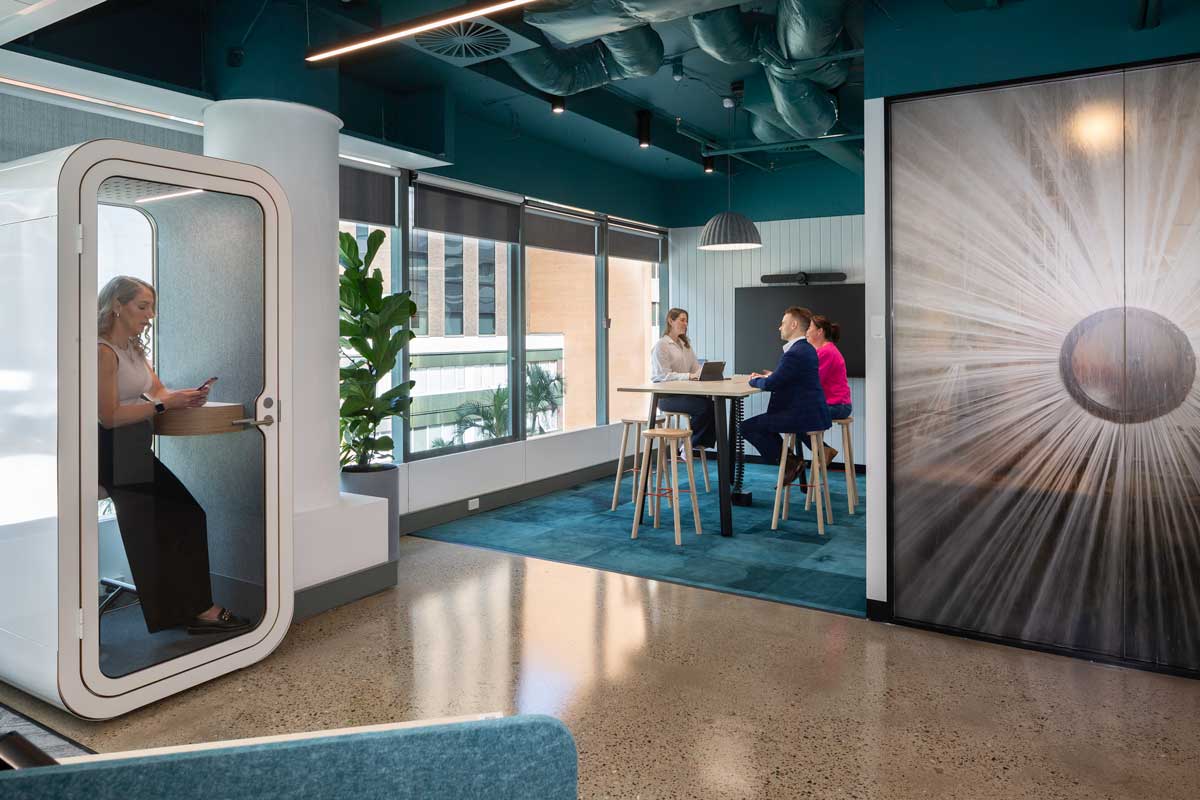
Understanding Sustainability in the Workplace

The Role of Sustainability in the Workplace
In today’s business landscape, sustainability has become a key focus for organisations aiming to reduce their environmental impact and promote long-term value. Jason Varker-Miles, Director at Aston Consulting, a leading engineering firm specialising in commercial office fitouts, recognised the growing need for clarity in this space. Having partnered with Axiom on numerous projects, he saw firsthand the increasing confusion around sustainability certifications such as Green Star, NABERS, and WELL, particularly how they relate to carbon emissions and workplace design.
Sustainability is rapidly becoming a key factor in workplace design and operations. As businesses strive to meet environmental goals and corporate responsibilities, it's essential to understand the principles of sustainability and how they apply to workplace projects. This article delves into the essential components of sustainability in workplace fitouts, the importance of certifications, and the growing impact of sustainability on the corporate landscape.
What is Sustainability?
At its core, sustainability is about balancing the needs of the present without compromising the ability of future generations to meet their own needs. In workplace design, it involves three main pillars:
- Climate Action: This refers to reducing the net emissions produced by workplace operations, such as achieving net-zero emissions through energy efficiency and reducing greenhouse gases.
- Resource Efficiency: This focuses on minimising the carbon footprint of materials used in the workplace. It includes both embodied carbon (the carbon used to create materials), and operational carbon, which is the ongoing energy use required to run a space.
- Health and Well-being: Ensuring the workplace promotes a healthy and happy environment for employees is critical. This includes aspects such as indoor air quality, natural light, and overall design that fosters productivity and well-being.
Below: An example of a sustainable workplace is Seqwater. This project focused heavily on retaining and repurposing existing elements where feasible.

Key Certifications and Rating Systems
Several certifications and rating systems are widely used to measure sustainability in workplaces, each with its own focus and criteria:
- Green Star: A holistic sustainability certification that measures the environmental impact of a building or fitout. It focuses on management, energy, transport, water, and materials used, but doesn’t consider the impact on people. Green Star certifications do not expire and are often pursued by businesses looking to showcase their environmental commitment.
- NABERS: The National Australian Built Environment Rating System measures the energy efficiency of a building or fitout. This rating is mandatory for buildings over 1,000 square meters. Unlike Green Star, NABERS places a strong emphasis on operational energy efficiency.
- WELL: A globally recognised certification focusing on human health and well-being. Unlike Green Star, WELL is all about the people. It covers indoor air quality, lighting, water, and more, and its certification must be maintained every three years.
- LEED: The American version of Green Star, LEED is required by U.S.-based companies. However, Green Star is typically more suitable for Australian businesses, as it aligns with local environmental standards.
Below: Jacobs Engineering is located in a A-Grade landmark building that boasts a remarkable 5.5 Star NABERS Indoor Environment rating plus a 4.5 Star NABERS Energy rating ensuring optimal comfort for all of its occupants.

ESG vs. CSR: Understanding the difference
When discussing sustainability, it’s important to understand the difference between ESG (Environmental, Social, and Governance) and CSR (Corporate Social Responsibility):
- ESG focuses on measurable, strategic goals that are often tied to a company's annual targets and performance reviews. Failure to meet ESG targets can result in tangible consequences, such as financial penalties or lost opportunities.
- CSR, on the other hand, is more of a "nice to have" set of policies. While CSR initiatives are valuable, they don’t carry the same weight or accountability as ESG commitments.
The Growing Importance of Carbon and Net Zero
Carbon reduction has become a crucial aspect of workplace sustainability. There are two key types of carbon to consider:
- Embodied Carbon: The carbon emissions generated during the production and transportation of materials used in fitouts.
- Operational Carbon: The carbon emissions resulting from the day-to-day operation of the workplace, such as energy use for heating, lighting, and ventilation.
Many businesses are now setting ambitious net-zero targets for carbon emissions, aiming to balance the amount of carbon emitted with carbon offsets, such as reforestation projects. By 2025, all companies in Australia with revenues over $500 million will be required to report their carbon footprints, pushing more organisations to adopt sustainable practices.
Sustainability Costs and ROI
Implementing sustainability in the workplace does come with costs. For example, achieving a 5-star Green Star rating can add 2-3% to a project’s overall cost, while a 6-star rating can increase the cost by 3.5-5%. However, the cost of sustainable materials and processes is gradually decreasing as demand grows.
Future Trends in Sustainability
Several trends are shaping the future of sustainability in the workplace:
- Embodied Carbon: More clients are focusing on reducing embodied carbon in projects over 10,000 square meters, reflecting a shift towards more responsible resource usage.
- Health and Well-being: WELL certification is the fastest-growing aspect of sustainability, especially in the post-COVID world, as businesses strive to create healthier workplaces to attract and retain talent.
- Mandatory Reporting: As regulations evolve, more companies will be required to report their sustainability metrics. By 2026, all companies with revenues over $200 million will need to report their carbon emissions.
Below: Akuna Capital needed a workplace that refurbished the area to create a sustainable, vibrant and youthful space that enhanced their company culture and cross-function collaboration.

Sustainability is no longer an optional consideration in workplace design; it’s a necessity. With the growing focus on ESG targets, reducing carbon footprints, and enhancing employee well-being, businesses need to stay ahead of the curve by incorporating sustainability into their core strategies. As sustainability becomes more accessible and cost-effective, organisations that embrace it will not only benefit the planet but also position themselves as leaders in a rapidly evolving market.
If you need advice on how to implement sustainability in your organisation, consider our ESG framework.
Find out more about how sustainability in workplace design improves wellness and wellbeing.





